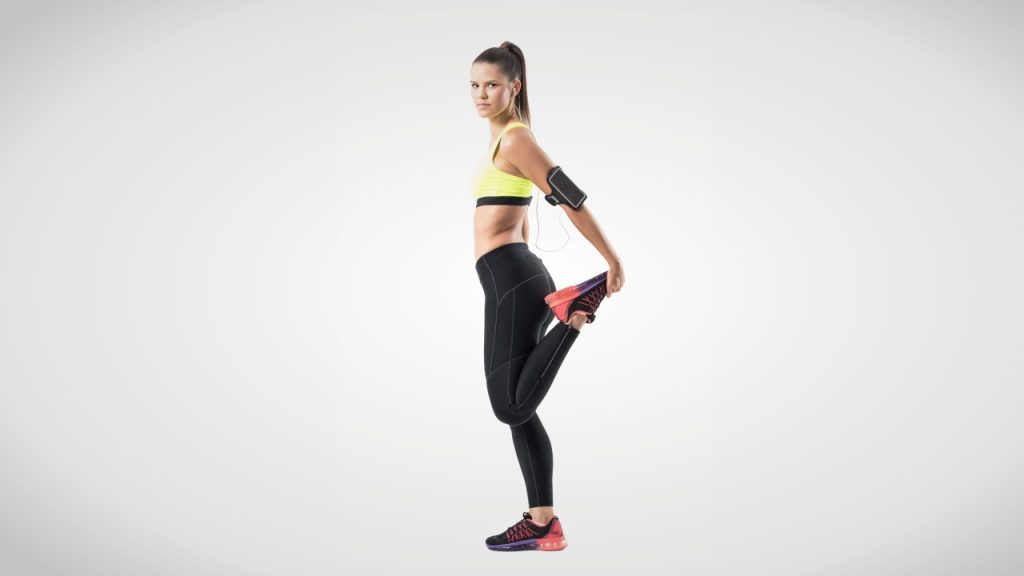
Stretches for Runners: Dynamic vs Static Stretching

A training module for any kind of sport must include warm-up and stretching exercise routines. Why? Warm-ups reduce your chances of injury, make your workout experience better, and may even help improve your performance in the sport. Different types of stretches increase the range of motion around a joint, and makes you more flexible.
The aim of a warm-up is to increase blood flow to the muscles, thereby increasing muscle as well as core temperature. An appropriate warm-up brings the following changes to your body, which may help in enhancing performance:
- Lowering viscous resistance in muscle
- Faster muscle contraction
- Increased force and power development
- Improved blood flow to muscles
- Improved oxygen delivery
Flexibility has two components — static and dynamic. Static flexibility is the range of motion of muscles and their associated joint during a passive movement. Dynamic flexibility is the range of motion of muscles and their associated joint during an active movement.
Different sports have different flexibility requirements and stretching exercises can help runners improve exponentially. However, if muscles are moved beyond a certain range of motion, there is an increased risk of injury. Also, imbalances in flexibility are one of the main causes of injury in athletes.
Let us explore why dynamic and static stretches are important for runners.
Also read: Why Is Running Good for You?
Dynamic stretches
These stretches are functionally based and use movements that are sport-specific — they prepare the muscles and joints by closely mimicking the sport you are about to perform. They involve active movement of target muscles, which results in an increase in core temperature. This type of stretching has the additional advantage of involving several muscles along with multi-joint and multi-planar movements, thus bringing about efficient use of time.
When designing dynamic stretches for runners, an expert or coach makes a careful assessment of muscles and joints. They can design a series of drills to cover the entire range of sport-specific movements. Each drill can be performed either in the same place for a certain number of repetitions or for a certain distance.
It is important for runners to perform a warm-up with dynamic stretches that include running gait drills. They prepare the muscles of the lower extremities for the physical stresses of running and speed training. Initiating training without warming up may result in hamstring, calf, and quadriceps muscle pulls / strains.
An example of how to perform a dynamic stretch:

When preparing to train for speed work in running, the athlete uses “high knees” in which there is an exaggerated movement of bringing the knees up (see fig). This movement activates the hip flexors powerfully and stretches the hamstrings and glutes at the same time. Thus, there is active movement of the ankle, knee and hip joints through a range of motion required for subsequent activity.
Here are some dynamic stretches that runners can practise:
1. Arm swings or circles

2. Walking lunges

3. Jumping jacks

4. High knee skips

5. Bounding

Static stretches
Static stretching results in elongation and relaxation of the stretched muscle. It brings about an effective change in range of motion around the joint and the muscle.
A static stretch is performed after a workout. It is performed slowly and the end position is held for a minimum of 30 seconds. It is recommended for all athletes to increase flexibility.
Static stretching, if done before a workout, may compromise force production in the muscles and hence, is not advisable as part of warm-up. They are best done after training or workout as part of cooldown to reduce muscle soreness. They also provide balance in flexibility on front / back and right / left sides of the body. Tight muscles arising out of inadequate flexibility can give rise to injuries such as plantar fasciitis, IT band syndrome and runner’s knee.

The sitting toe touch is an example of a static stretch in which the athlete sits on the floor with legs stretched and knees fully extended. The athlete then bends forward from the waist and slowly reaches for the shins, ankles or toes depending on how flexible the hamstrings and lower back muscles are. Hold the end position for 30 seconds with a slow attempt to deepen the stretch and elongate the hamstrings.
Here are some static stretches that runners can practise:
1. Standing/lying quadriceps stretch

2. Hip flexor stretch

3. IT-band stretch

4. Butterfly stretch for the groin and inner thighs

5. Calf stretch














